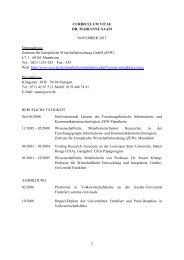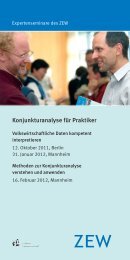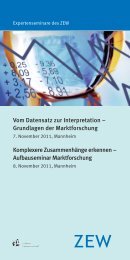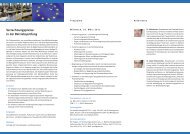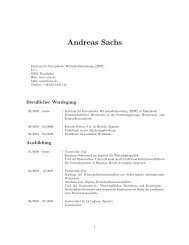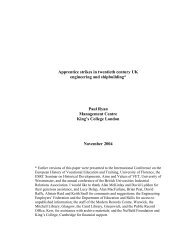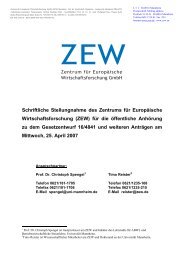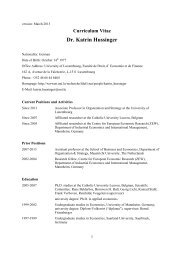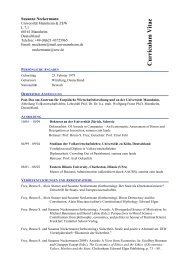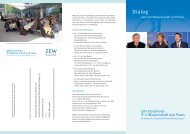Does Alma Mater matter? Evidence from Italy*
Does Alma Mater matter? Evidence from Italy*
Does Alma Mater matter? Evidence from Italy*
Create successful ePaper yourself
Turn your PDF publications into a flip-book with our unique Google optimized e-Paper software.
How do we explain the limited mobility flows between macro-areas? One<br />
natural possibility is that low mobility depends on family background and on<br />
liquidity constraints. According to this story, the internal rate of return of<br />
graduating <strong>from</strong> a Northern college is higher than in the South, but the higher<br />
costs prevent many Southerners <strong>from</strong> enrolling in the North. Studying in a<br />
university located in the North is likely to be expensive for a Southern student<br />
for a number of reasons. First, tuition is higher. Even though fees are not high<br />
by international standards, Northern colleges have used to a much larger<br />
extent than other universities in the country the opportunity to raise tuition in<br />
the second part of the 1990s above the centrally established ceiling (Law<br />
122/94). This and the endogenous selection of students to college have implied<br />
that average tuition in 1995 was about 50 percent higher in Northern than in<br />
Southern public universities – 511 € versus 326 € at current prices (see<br />
Silvestri et al, 1996). Second, both opportunity and living costs – including<br />
housing – are higher in the North. Third and last, income support provided by<br />
the national and local government is considered to be largely inadequate to<br />
eliminate liquidity constraints, as documented by Silvestri et al, 1996. [NON<br />
SAREBBE MALE AVERE QUALCHE DATO SUI COSTI DI VIVERE FUORI CASA<br />
ALL’UNIVERSITA]<br />
If liquidity constraints had played a significant role in hampering the<br />
mobility of students <strong>from</strong> the South to the North, we would expect to find that<br />
inter-regional mobility is much lower for students belonging to less educated<br />
and less wealthy households. Surprisingly enough, this is not the case. If we<br />
replicate Table 5 separately for individuals with “good” and “poor” family<br />
background at age 14 – good background being defined when the father was<br />
an entrepreneur, a manager, a high ranked director, a teacher or a high<br />
ranked white collar, and bad background when the father was in a low paying<br />
occupation – there is no difference worth noticing – see Table 6 below. The<br />
percentage of students in our dataset residing in the South who went to<br />
college in the South is 72.99 percent if <strong>from</strong> a good family background and<br />
74.12 percent if <strong>from</strong> a bad background. On the other hand, the percentage of<br />
students residing in the South before college who moved to the North for<br />
19




